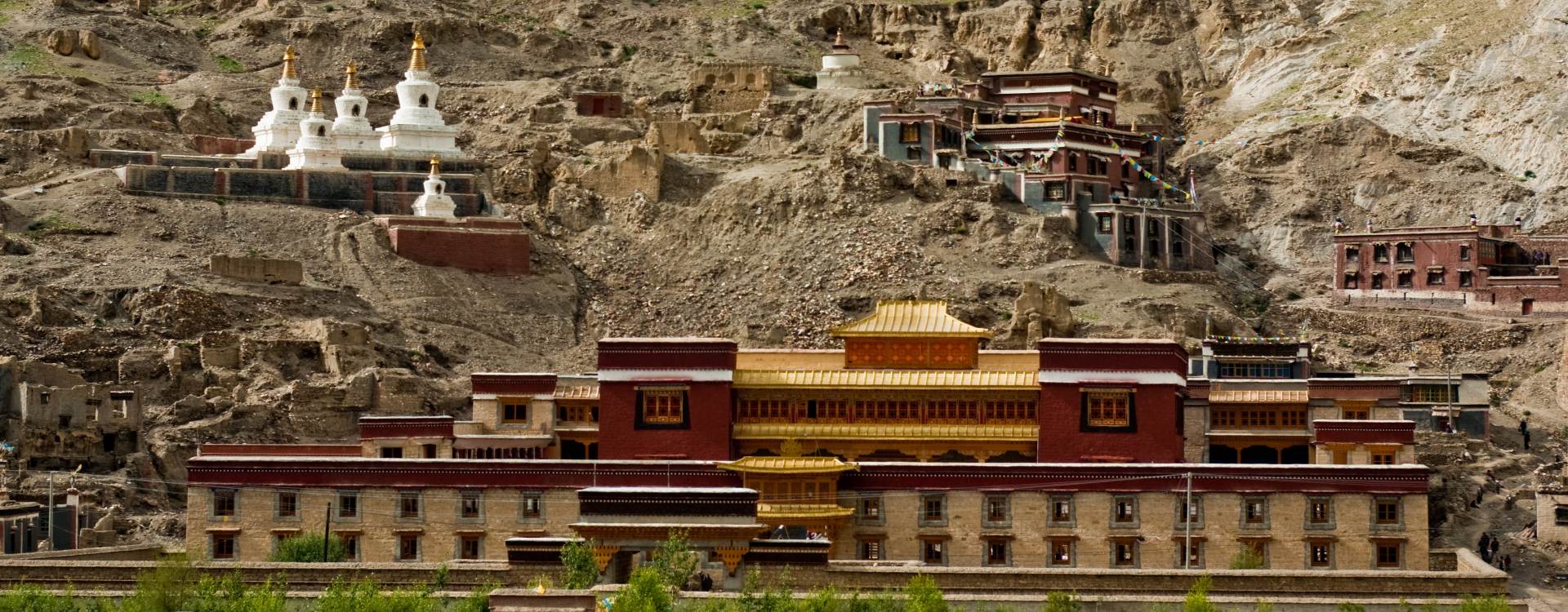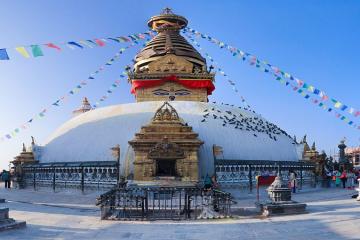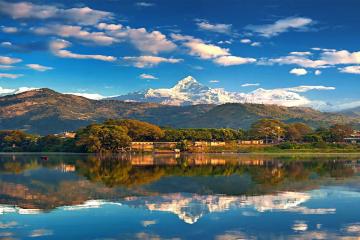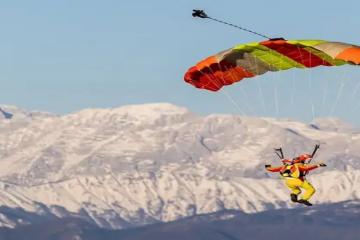

If you are eager to learn about Tibetan Buddhist culture and its landmarks and ways of life, the Tibet Cultural Tour is the trip for you. Tibetan culture is distinct from that of other countries throughout the world, it has been untouched by globalization for many years and thus has maintained its uniqueness. The ancient sacred city of Lhasa dominates this faraway land of culture, wide open spaces, plated roofed sanctuaries, and unpredictable enriched religious communities. Cities like Shigatse, Gyantse are legendary as well.
Monks can be seen debating the philosophical tenants and metaphysics of Buddhism in the monasteries in Tibet. After exploring the Potala Palace, the ex-home of the Dalai Lama, we also visit numerous monasteries and temples like the Jokhang Temple and Sera Monastary. Barkhor street surrounds the temple, where pilgrims and locals can do kora and visit the old market. Barkhor Street is a one-way looped praying path that circles Jokhang Temple. Kora is a traditional pilgrimage with contemplative practice that is often undertaken by practitioners circumambulating a sacred spot or object. Locals in Tibet believe that performing the Kora may rid them of all evil practices and agonizing pains while also guiding their prayers to attain boundless virtues and profound knowledge. You can also see monks debating at the Sera monastery in Lhasa.
Then, via Gyantse, we will drive to Shigatse, the most important city in the Shigatse district, the second largest city in Tibet, and the residence of the Panchen Lama, and visit Sakya monastery, noted for its frescoes and the second Dunhuang. On the route, we stop to see the breathtaking grandeur of Holy Yamdrok Lake and the Karo glacier, as well as the Tashilumpo Monastery, which houses the world's largest copper Buddha statue. Gyantse is home to Tibet's largest stupa, which houses 100,000 Buddhist figures.
Thus, if you are interested in experiencing and learning about Buddhist culture, tradition and religion, this trip made by Accessible Adventure is perfect for you!.
Our representative will greet you as you arrive at the top of the globe in Lhasa. It is our job to meet your needs now that you are in our care. Because Lhasa is located at a vast altitude of 3600m, you may feel little breathless while you adjust to the low altitude.
On their route to the hotel, tourists could see the Yarlung Tsangpo River, Tibet's largest and longest river. You can get some rest after checking in. You can also go out and explore the city if you want. But keep in mind not to bring too much, and strive to travel light. Meanwhile, drink some extra water and avoid strenuous activity. Acclimatization to high altitude is really beneficial.
After a night of relaxation, you will be ready to begin your Lhasa city tour today.
You will start your exploration of Lhasa at the Potala Palace, which serves as both the spiritual center of the city and the winter residence of the Dalai Lama. During the 7th century, it was constructed by the 33rd great monarch of Tibet, whose name was Songtsen Gangpo. The most interesting sights at Potala Palace are the gilded burial stupas of previous Dalai Lamas and the meditation Cave of the 33rd great king. We will allow a significant amount of time to visit Potala Palace so that you can get the most out of your experience there, both in terms of the views and photographs you take as well as the insights you gain into Tibetan history and culture.
Immediately following lunch, you will travel to Jokhang Temple, which, like the Potala Palace, was established at the same time and by the same king. Many devotees can be seen prostrating themselves in front of the temple when viewed from the outside. The statue of Buddha Sakyamuni, when he was 12 years old, is considered to be the most valuable artifact in this temple.
Bakhor is widely known throughout Tibet as a pedestrian retail street. There are a large number of unique stores and stalls that sell a variety of Tibetan goods, including handicrafts, Thangka, and other items. In addition to shopping, tourists can also participate in the Kora with pilgrims and locals in order to have a deeper understanding of Tibetan religious tradition.
Dadong Village is Lhasa's most picturesque neighborhood, and you'll be seeing it first thing in the morning. Dadong Settlement is a well-protected old Tibetan village that is located 25 kilometers southwest of Lhasa's city. Upon arrival, you will go on a short walk around the village before seeing the 11th-century Nyimatang Monastery and getting a glimpse of rural life in Lhasa.
Following our visit to Dadong you will be traveling to Drepung Monastery, also known as the "Monastery of Rice Heaps" in Tibetan. You will arrive there in the early afternoon. It is a fantastic building complex that is white, and from a distance, it appears to be rice heaps. The Drepung monastery is the greatest Tibetan Buddhist monastery, and throughout its history, it has been home to more than 10,000 monks.
The Sera Monastery, which is considered to be one of the "big three" Gelug monasteries in all of Tibet, will be the focus of your afternoon excursion. Discussion occurs among monks between the hours of three and five in the afternoon. At these monasteries, you'll also have the opportunity to view colorful rock paintings of Buddha as well as mandalas. In addition to that, the scenery is pretty pleasant here because there are wild roses all around. Because of this, some people also refer to it as "the Court of wild rose."
In addition, the Norbulingka monastery is on our schedule for today. Norbulingka means Jeweled Park. From the 1780s up until the 14th Dalai Lama's exile in 1959, it was the traditional summer residence of the Dalai Lamas in the years leading up to his departure.
Following breakfast, we will go on a journey by car to Gyantse, which is located 262 kilometers distant from Lhasa. To begin, on the way to Kampala pass, you will have the opportunity to catch a glimpse of Yamdroktso Lake (4790m). This is the sacred lake that is encircled by many snow-covered mountains on all sides.It is the second largest of the three sacred lakes in Tibet that may be found here. It is more than 45 miles in circumference. The lake is nourished by a myriad of tributaries, and it is encircled by many snow-capped mountains on all sides. The lake's name means "turquoise" in English due to the hue of its water.
When we drive by the Korala Glacier on the roadside, you can stop and take amazing pictures and take in the scenery. Following the prayer flag atop the Simila Mountain pass, we will make our way to Gyantse, which is Tibet's third largest city after Lhasa and Shigatse.
The Pala Manor may be found a short distance from Gyantse. It is the primary estate of the Para family, whose full name is Paji Lacan and who were a wealthy Tibetan aristocratic family in the past. In addition, the Para Manor is the only manor of the three old Tibetan noble families that has been carefully preserved to this day.
Following breakfast in Gyantse, our next stop will be at the Pelkor monastery. In addition to this, the monastery is one of a kind in all of Tibet because it is home to three distinct schools of Tibetan Buddhism: the Sakya, the Gelug, and the Kadam schools. It is one of the monasteries in Tibet with the highest prestige and can be found approximately 100 kilometers to the southeast of Shigatse City. The architecture of the monastery incorporates elements of Tibetan, Chinese Han, and Nepali styles.
Following our time at the monastery, we continue on our way to Shigatse, stopping briefly to tour the Gyantse Fort along the road. One of the dzongs in Tibet that have been kept the finest is the Gyantse Dzong, also known as the Gyantse Fortress. 1390 was the year that construction began on the stronghold.
Today, we make our way to the Shalu monastery, which is our last destination before arriving at our accommodation in Shigatse. The Shalu Monastery is a minor monastery that may be found in Tibet, approximately 22 kilometers (14 miles) south of Shigatse. It was established in 1040 by Chetsun Sherab Jungnay, and for generations, it was known as a center of scholastic learning and training for the psychic arts. Additionally, its mural murals were regarded as some of the oldest and most beautiful in all of Tibet.
After breakfast in the early morning, we will drive to the well-known Tashilunpo Monastery. In 1447, the first Dalai Lama built the Tashi Lhunpo Monastery. It is where the Panchen Lama has lived as a monk for a long time, and it is also an important monastery from a historical and cultural point of view. Tashi Lhunpo Monastery is in Shigatse, which is the second largest city in Tibet. It was founded by the first Dalai Lama in 1447. It is where the Panchen Lama has lived as a monk for a long time, and it is also an important monastery from a historical and cultural point of view. In the Gelug school of Tibetan Buddhism, the monastery was where Panchen Lamas, the Gelug school's second-highest-ranking Tulku, usually lived.
From Shigatse, we make our way to Sakya after breakfast. Sakya County is where the world-renowned Sakya Monastery is located. The center of the Sakya school of Tibetan Buddhism, it was established in 1073. Both a northern and a southern monastery make up the Sakya complex. Originally a Nyingmapa monk of the great noble family of the Tsang, Khön Könchok Gyalpo, who became the first Sakya Trizin, established the city in 1073 as the seat of the Sakya (or Sakyapa) school of Tibetan Buddhism.
The library of Sakya Monastery is massive, with a reported 84,000 books housed in traditional stacks measuring 60 meters in length and 10 meters in height. There are works of literature, history, philosophy, astronomy, mathematics, agriculture, and art among them, but Buddhism provides the bulk. Only the ruins of the Northern Monastery remain, whereas the Southern Monastery was designed to resemble a castle.
Today we have a long drive ahead of us as we have to travel 411km from Sakya to Lhasa. The nearly 8 hour drive will take us back through Shigatse, Gyantse and all the way back to Lhasa. Thus, we leave Sakya early after breakfast with the aim to reach Lhasa in the evening.
As we reach Lhasa, we can go explore the Lhasa river, also known as the Brahmaputra and get scenic shots in the sunset.
After completing your tour in Tibet, today is the day that you will begin your journey home. We really hope that you had a good time during your visit. Our personnel will pick you up at your hotel three hours before your flight is due to depart and drive you to the airport. Always remember to look out for your own safety, and keep us in mind for any future adventures in the Himalayas. Tashi Delek!
Want to make your own customized trip ? Click Here
Airport Pickup/ drop service
Necessary Tibet Travel Permit
Daily Breakfast
Tibet Visa Fee
Private Transportation by jeep/van
English speaking Tibetan guide
Sightseeing and Entrance fee as per the itinerary
Hotel Accommodation on twin sharing basis
All the Government and local taxes
Lunches and Dinners whist on tours
Travel insurance
Nepal entry & re-entry visa
International flights to/from Lhasa
Personal expenses like beverage, mineral water and tips
Natural and political disturbance and unforeseen circumstance
Tibet is on a plateau at a very high altitude, and a large part of the country stays frozen all year round. Most places can be visited at any time between April and November, except during the months when it rains the most. Even though these months are high up, they are surprisingly warm. From December to March, the temperature drops below freezing and it snows a lot. This can make it hard for planes to get into the country, which makes a lot of Tibet's mountains inaccessible, even though they look beautiful. This could make the trip more difficult and dangerous than it needs to be, which is why we don't recommend it. The rainy season starts at the end of May or the beginning of June and lasts through September, with most of the rain falling in July and August. Because of this, there is a possibility of cloudy skies, which obscures the views of the vistas. So, the best time to go to Tibet is between May and October, when temperatures reach double digits and most of the ice that covered the land has melted.
Accessible Adventure is a travel and tour organization run and managed by a team of experienced, veteran Nepalese nationals. This team has extensive expertise planning and running resorts in Bhutan, Nepal, and Tibet, all in the Himalayas. We are an innovative and rapidly growing tour operator based in Kathmandu, Nepal, with over a decade of experience in arranging memorable vacations for our clients using first-rate resources at competitive rates. You can take advantage of all the Himalayan travel options we offer throughout your time with us. Our current and former clients and customers consistently praise the quality of our planning and execution on all of our vacations. They have praised the quality and worth of their vacations with us.


